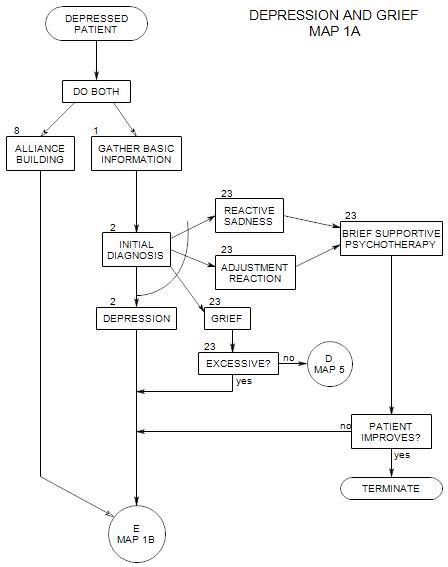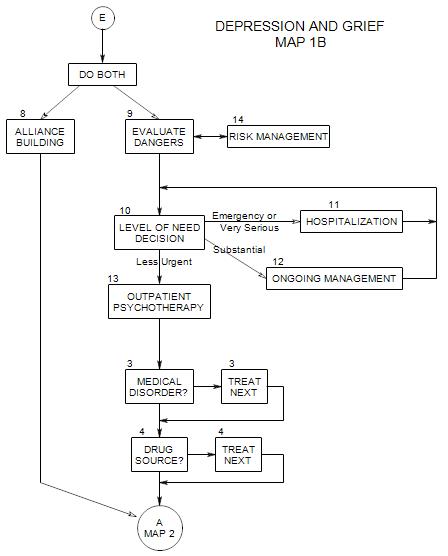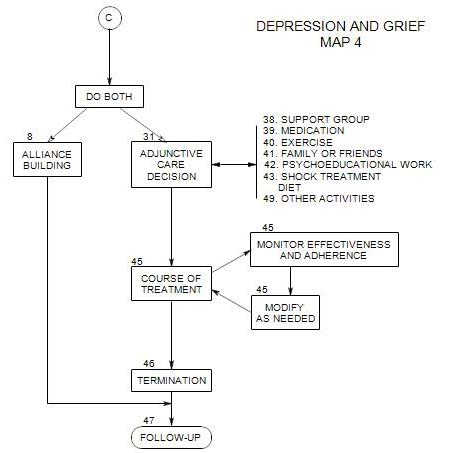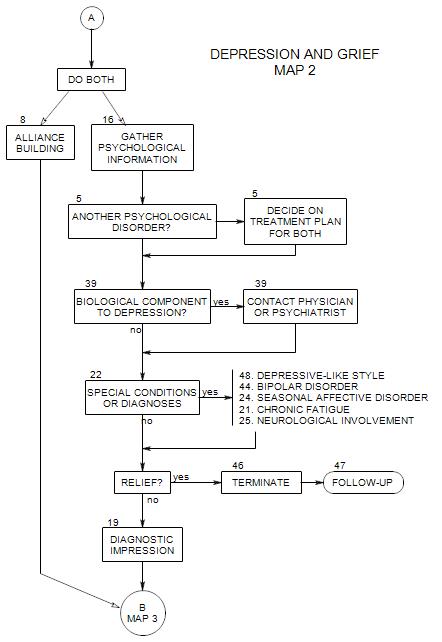
SECTIONS: 5 | 8 | 16 | 19 | 21 | 22 | 24 | 25 | 39 | 44 | 46 | 47 | 48
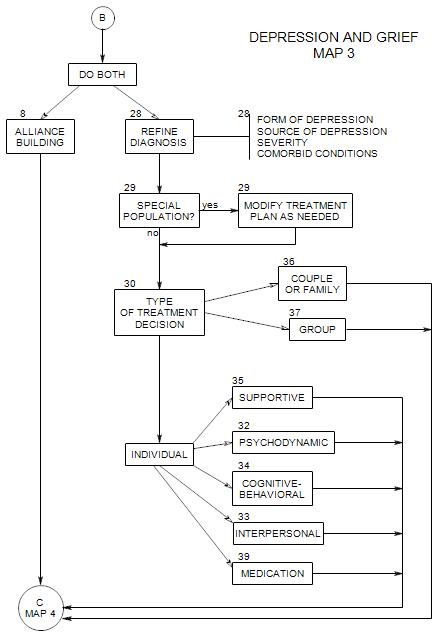
SECTIONS: 8 | 28 | 29 | 30 | 32 | 33 | 34 | 35 | 36 | 37 | 39
-
Comes from Section 3 Medical Disorders That Can Cause Depression on Map 3
Adapted from Goldberg (1998), Preston and Johnson (1994, fig.1, p. 4) and Preston, O’Neal and Talaga (2002, pp. 62-67).
For a review that focuses on classes of disorders and also includes recommendations for psychopharmacology, see Schatzberg and Nemeroff (1995, p. 576ff)
Addison’s Disease. Caused by deterioration of adrenal glands. Cortisol cycle is disrupted.
AIDS
Alzheimer’s Disease
Anemia
Arthritis
Asthma
Brain Tumor
Cancer
Chronic Fatigue Syndrome
Chronic infections
Chronic Pain [eg: headaches, backaches, arthritis] causes fear of movement, which creates conditions for more pain
Congestive heart failure
Cushing’s Disease. Pituitary gland produces too much ACTH, leading to depression and mania
Diabetes
Epilepsy
Gastrointestinal malignancies
Headaches, esp: migraines are strongly associated with depression
HIV
Huntington ‘s disease
Hepatic Failure
Hepatitis
Hypercalcemia
Hypercortisolism
Hyperthyroidism leads to apathy and listlessness
Hypocortisolism
Hypoglycemia
Hypokalemia
Hypoparathyroidism
Hypothyroidism
Hypoxia
Infectious hepatitis
Influenza
Mononucleosis
Multiple Sclerosis
Pancreatic malignancies
Parkinson’s disease
Porphyria
Renal Failure
Rheumatoid arthritis
Sleep Apnea
Sleep Loss
Sleep pattern disturbance, esp: increased REM and loss of deep sleep [Stages III and IV]
Stroke
Syphilis
Systemic Lupus Erythematosus
Tuberculosis
Ulcertive colitis
Uremia
Vitamin B12 Deficiency
